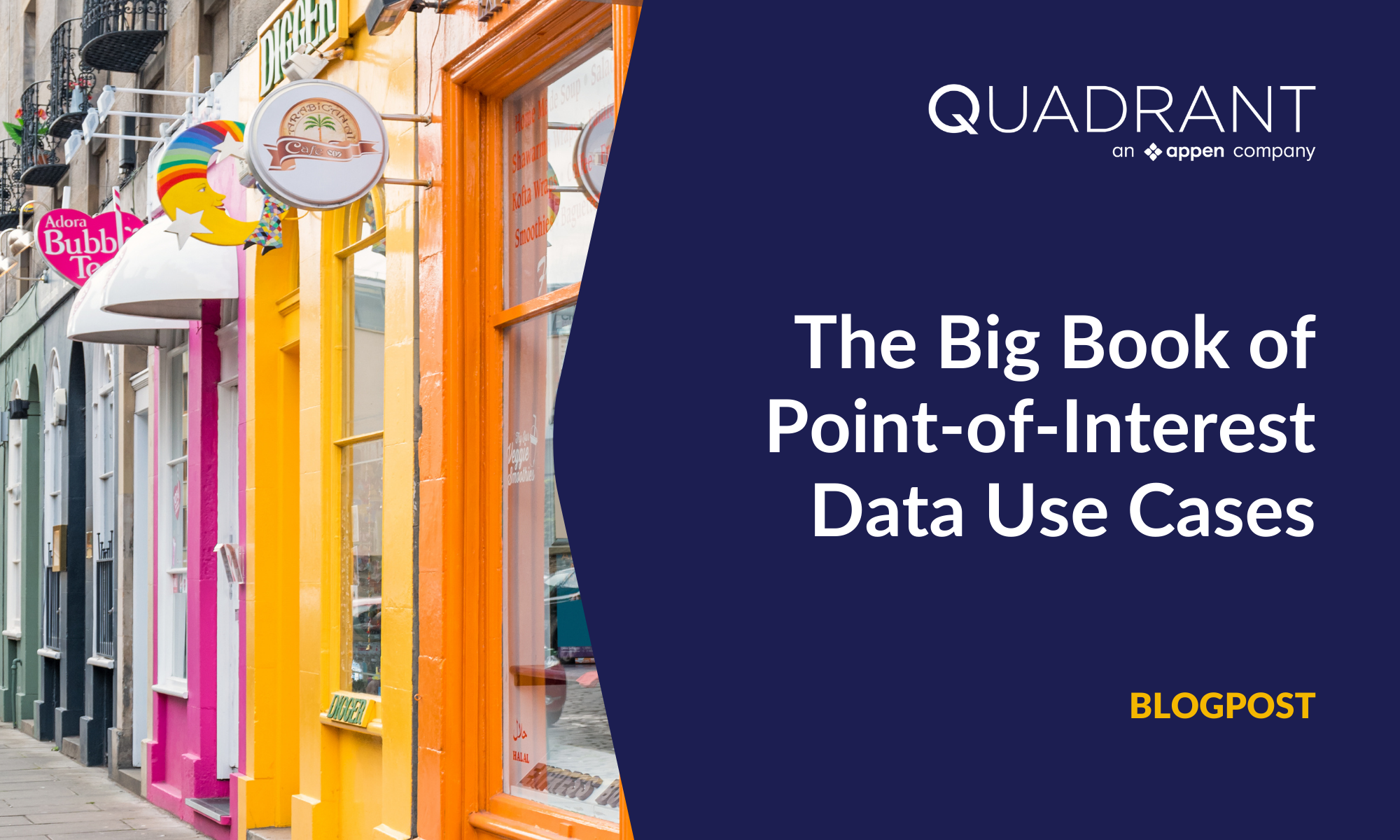Point-of-Interest (POI) data is the digital representation of physical spaces that are of interest to individuals, businesses, and governments – such as malls, restaurants, train stations, residential complexes, hospitals, and schools. In other words, a POI can be anything that someone wants to find on a map. POI data acts as the lynchpin of operations in several industries, including ridesharing, last-mile delivery, logistics, real-estate, retail, marketing and the public sector. Even companies whose business model is not primarily built on POI data can still harness it to glean insights that offer a tangible, competitive advantage. Data scientists generate meaningful insights on the distinct characteristics of neighbourhoods, people’s movement patterns, and an area’s vulnerability to natural disasters by analysing POI data alongside mobile location data, demographics, purchase data, and environmental records.
Ridesharing companies like Uber, Grab, and Gojek harness POI and human mobility data to match passengers with drivers, provide precise ETAs and ride times, and determine pricing according to distance and prevailing traffic conditions. Food delivery companies like Deliveroo utilise POI data to help customers find their cuisine or restaurant of choice within a certain range of their current locations. POI and mobile location data are collectively used by such businesses to forecast peak traffic – which, in turn, allows them to build surge pricing models. Both food and last-mile delivery businesses rely on POI and mobility data to provide accurate ETAs and automated tracking.
In supply chain management, POI data facilitates navigation, tracking, and procurement systems. Such data is combined with mobility data to identify patterns and bottlenecks present in supply networks so that measures can be taken to make such networks more efficient. POI data – along with inventory information – also allows businesses to make sure their storage facilities are being properly utilised, and that consumer demand is consistently being met.
POI data also has various applications in the financial services sector. Insurance firms set their premiums by assessing risk through POI and other data types. Retail banks identify viable expansion sites by analysing the distribution of their touchpoints and those of their competitors. Investment banks use POI and mobility data to forecast business performance before it is reflected in the quarterly reports.
Footfall analysis – a means of determining foot-traffic at a location – is made possible by leveraging both POI and mobile location data. Retail businesses use this analytical method to measure the performance of their outlets, gather competitive intelligence, and discern valuable information such as busiest hours, days, and holidays. Measuring foot-traffic also allows marketing teams and agencies to assess the effectiveness of Out-of-Home (OOH) ads and pinpoint sites that offer the greatest exposure for OOH advertising assets.
POI data is used to fill digital real estate platforms with information that is essential for buyers. Is the property close to a school and day-care? How far away is the nearest mall? How long does it take to walk to the nearest public transit station? By allowing such platforms to answer these questions, POI data significantly improves the user experience of prospects and customers.
Governments and the public sector frequently utilise POI data for multiple purposes. Health departments analyse POI data on the distribution of medical facilities (along with census and demographic data) to decide which areas warrant resources and attention. Education departments undertake a similar approach when choosing where to set up new schools and colleges.





